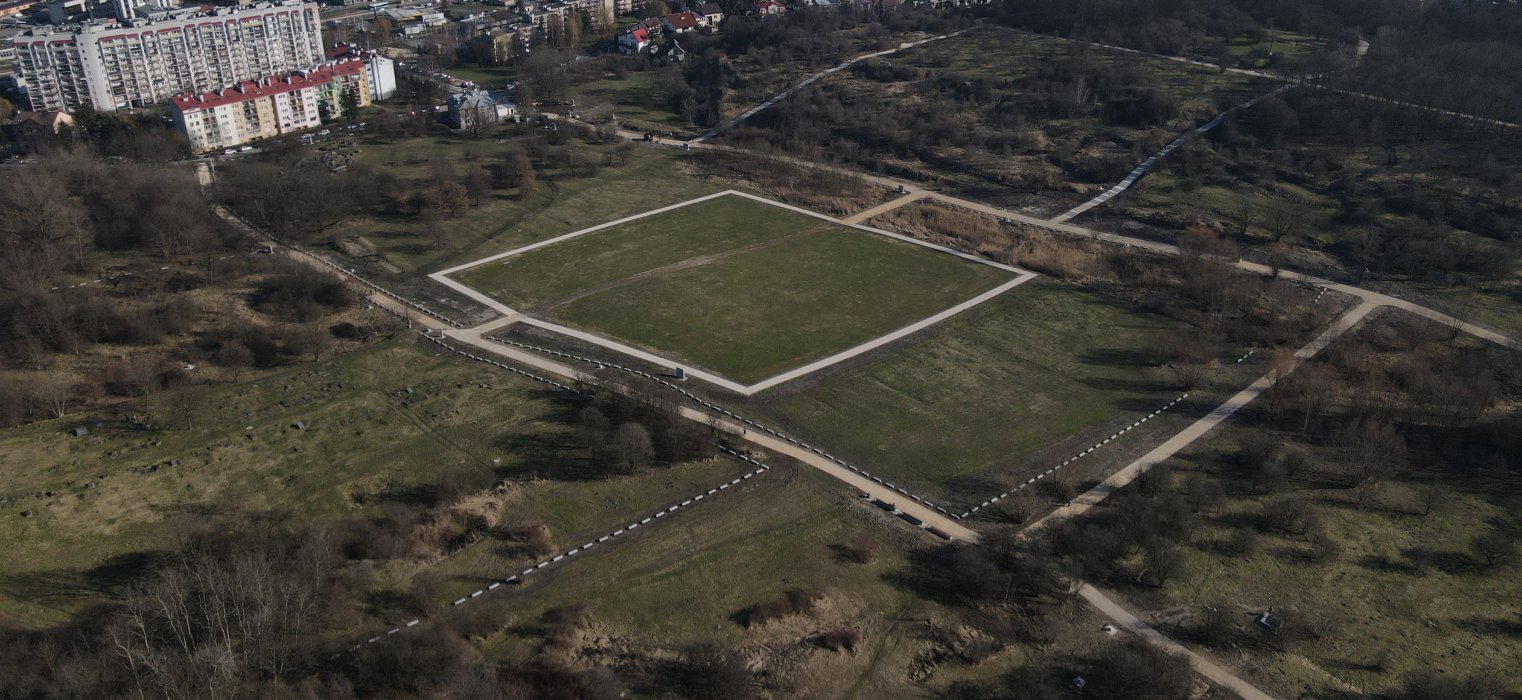The area of KL Plaszow

The site commemorating the former German Nazi camp Plaszow includes 0.37 sq. km of the former camp area, entered in the list of protected heritage monuments on 24 October 2002. The area contains two Jewish cemeteries, and is a listed war cemetery as a whole. The Memorial site extends between Jerozolimska Street to the east and Swoszowicka Street to the west. Its northern limit is marked by the former Libana quarry, and its southern and south-eastern border is formed by residential buildings; mainly detached houses.
At the of the operation of the camp, the area was occupied by residential barracks for the prisoners, and service and workshop barracks in the camp's industrial section.
Currently, the former camp area, entered in the list of protected heritage places, contains the locations of mass executions, relics of building development, Jewish cemeteries with partly preserved graves, monuments erected after World War II, and the historical Grey House. The camp's administration section, formerly occupied by the guards barracks, houses for staff members, warehouses, garages and stables, was almost entirely developed after World War II.
Currently, the former camp area, entered in the list of protected heritage places, contains the locations of mass executions, relics of building development, Jewish cemeteries with partly preserved graves, monuments erected after World War II, and the historical Grey House. The camp's administration section, formerly occupied by the guards barracks, houses for staff members, warehouses, garages and stables, was almost entirely developed after World War II.
The valley between the residential and industrial sections is now occupied by Abrahama Street, named Bergstrasse during the war. It is designated to connect the Memorial, a new exhibition building, and the historical Grey House. Both buildings will host permanent exhibitions.
There are no clear traces of the past, hence markings will be displayed in the area of the former camp to indicate the main visiting route. It will include the locations of importance in the camp history such as the places of execution, the roll-call ground, and relics of residential, service and workshop barracks. The grounds of two pre-war Jewish cemeteries, occupying one-third of the Memorial site, are of special historical importance. The preserved historical objects include the ruins of the funeral home at the New Cemetery of the Kraków Jewish community and more than 600 graves in the cemetery once used by the Podgórze community. Both necropolises occupied adjacent areas, divided by Jerozolimska Street, which is preserved today as a narrow path.
The vast former camp area is partly forested and covered in bush vegetation, and partly maintained as a meadow of short grass. The site will be preserved, without changing its features, and remain open to the public as a place for quiet tours, reflection and discovering its history.
The KL Plaszow Memorial Museum in Kraków
The German Nazi Labour and Concentration Camp (1942–1945)
The KL Plaszow Museum is a cultural institution of Kraków City and is co-managed by the Ministry of Culture and National Heritage
This website uses cookies to provide its services in accordance with the Cookies Policy. You can specify the conditions for storing or accessing the cookies mechanism in your browser.


